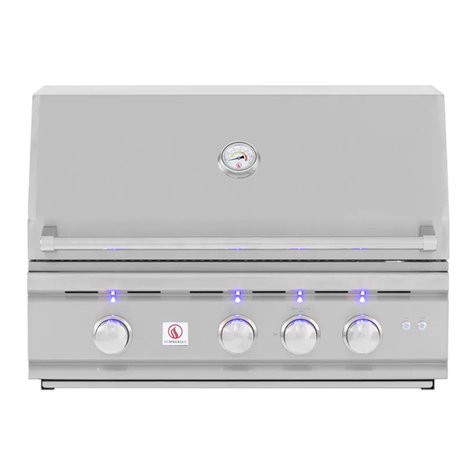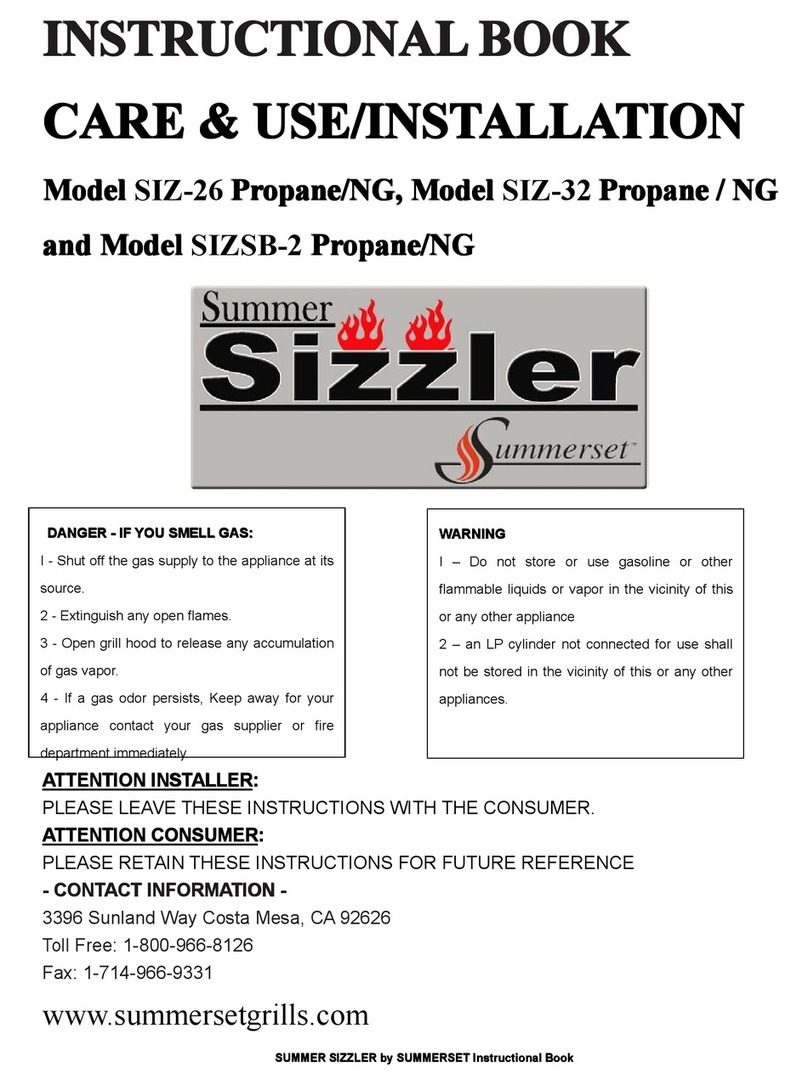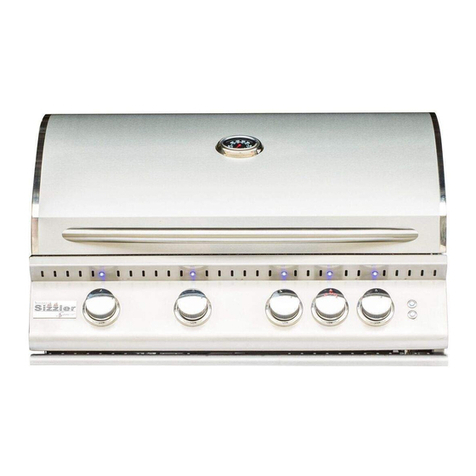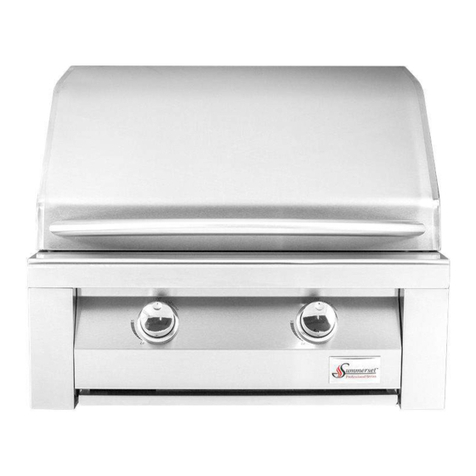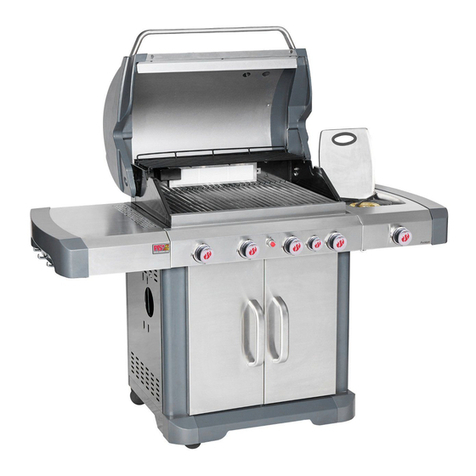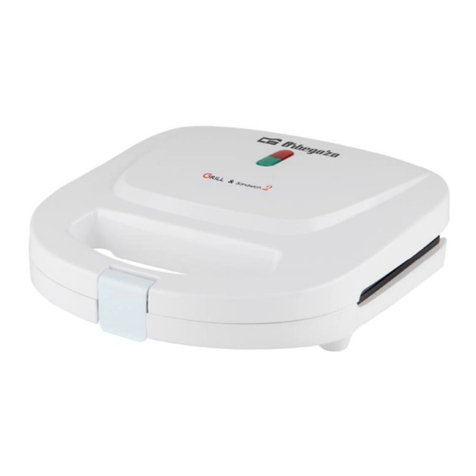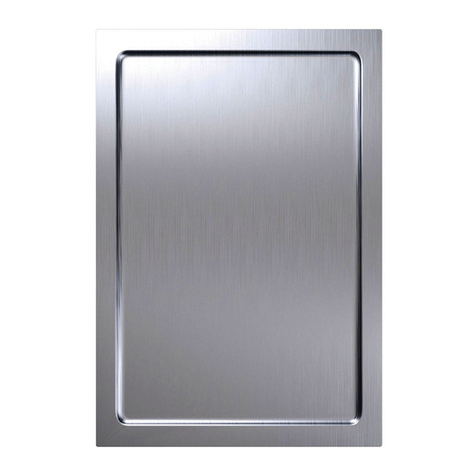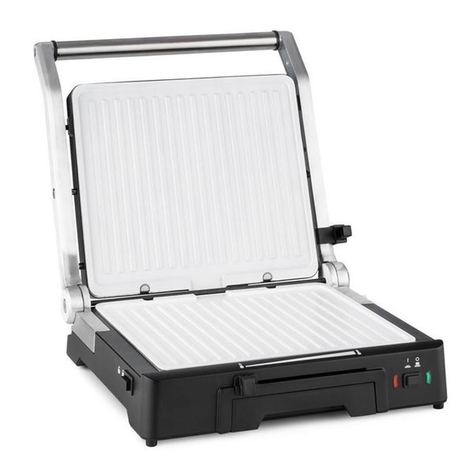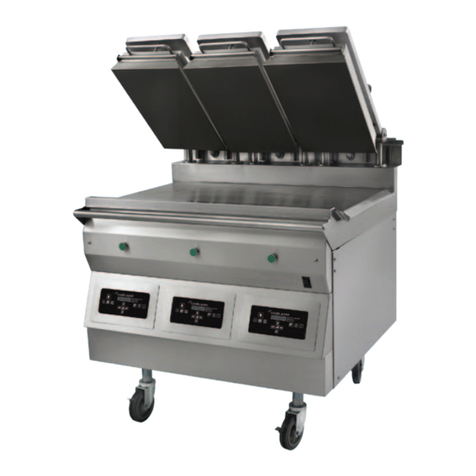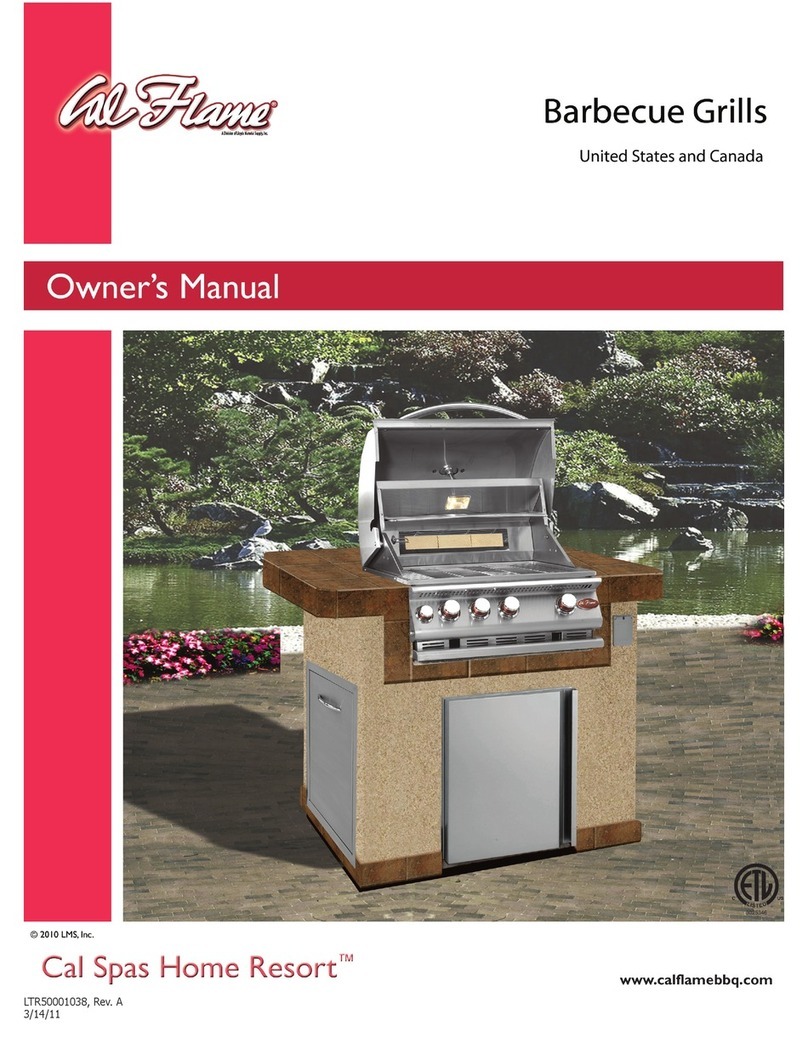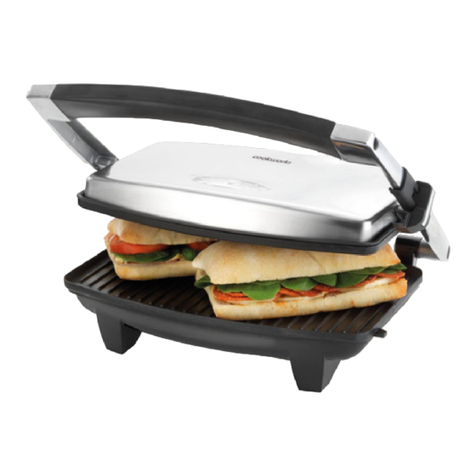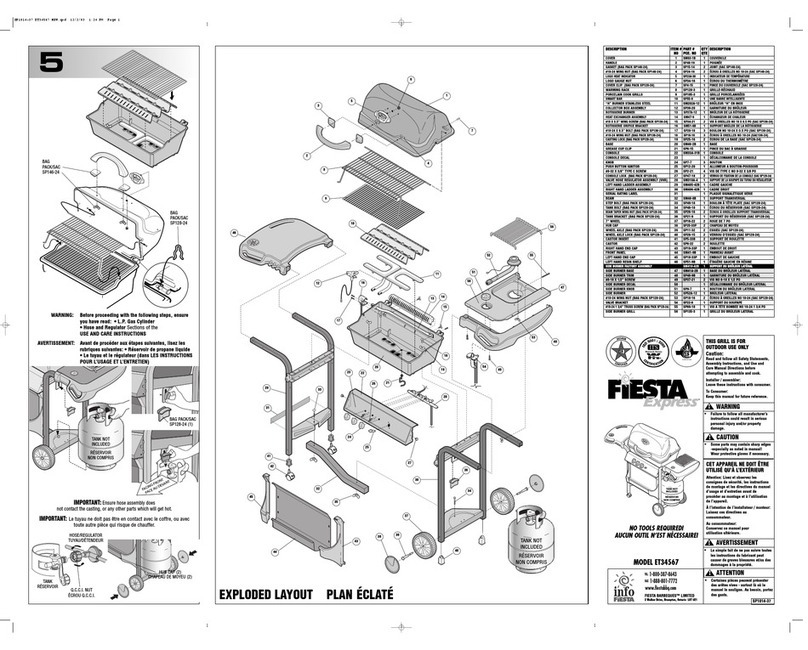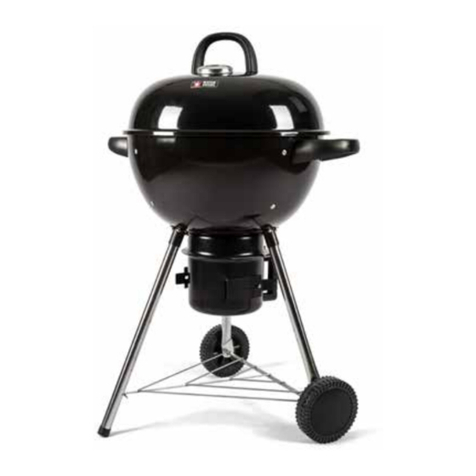
3
BEFORE GRILLING
SHIPMENT ARRIVING DAMAGED:
VISIBLE DAMAGE
Your AMG grill has been carefully designed for
easy placement and operation on your outdoor
room, patio or deck.
Before installation, it is important to carefully
select, plan, and prepare the location of your
new grill. When selecting a location, consider
important factors such as gas line access,
exposure to wind and foot-traffic, and areas
where people congregate. Avoid locating the grill
in areas where it may be accidentally touched or
bumped. Most importantly, this is an outdoor
appliance. Ensure your barbecue is positioned
safely away from anything that can catch fire.
Under no circumstance is this grill to be used
indoors. This includes garages or any other
enclosed area.
PREVAILING WIND
The American Muscle Grill design includes a wind
deflecting spoiler at the rear of the grill, however
winds blowing directly in the back of the grill can
still affect burner performance and proper air
flow which may cause overheating. If you have
a freestanding grill, position it so the prevailing
wind blows toward the front control panel (at
your back when grilling) for the proper front-to-
rear airflow. Built-in grills located in areas with
prevailing winds should be protected by
a wind barrier.
CLEARANCES TO COMBUSTIBLES
PROPER VENTILATION
KEEP IT LEVEL
PROTECTION FROM WEATHER
WARNING!
• Never locate the grill under a roof or
overhang, in a building, garage, shed
or other such enclosed area.
• Never locate the grill under
combustible construction.
• Never locate the grill where the gas
hose could create a safety hazard, or
be exposed to damage.
• Gas grills are not designed or certified
for and are not to be installed in or on
recreational vehicles, portable trailers,
boats or any other moving installation.
• Children should never be le
unaended in an area where a grill is
located. Place your grill well away from
areas where children play. Do not store
items that may interest children in or
around the grill, in the cart, or in the
masonry enclosure.
NOTE! PARTIAL ENCLOSURES:
Many backyards have areas that are
partially enclosed such as balconies and
pergolas. In some cases, it is hard to
determine whether these areas should
be classifieds indoor areas, particularly
in terms of permanent (non-closable)
IMPORTANT!
• Never install this product in a combustible
enclosure without an accessory grill liner.
Doing so could result in fire, property
damage, and personal injury.
• Maintain at least 15 inches of clearance
between the sides and back of the grill and
any combustible surface or material.
• Maintain at least 6 inches of clearance
between the sides and back of the grill and
any non-combustible surface or material.
• Do not locate the grill under any overhead
combustible construction
Ensure there is adequate fresh air ventilation
for both the barbecue and cylinder if your grill
operates on LP gas. This is required not only
for proper combustion, but also to prevent gas
buildup and a possible explosion.
Use your barbecue only on a firm level surface.
Proper leveling during installation is critical both
front-to-back and side-to side. A grill that is out
of level will experience erratic burner combustion
and inefficient, uneven heating.
Keep the barbecue protected from adverse
weather, including rain and high winds. A Polyvinyl
cover is included that has been custom designed
for your AMG grill. Always keep your grill covered
when not in use.
ventilation. If you are uncertain how to
categorize a partial enclosure, contact
the authority having jurisdiction for help
describing the space.
